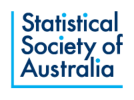Lively stats and analytics forum Chris
Spent a while looking into this problem for you - but any and all relevant knowledge I had is either very old, very rusty or non existent
I am very rusty on types of ILP and levels of hardness and complxity, and it crossed my mind you may not be able to predict it well at all, but if you could could you not combine a logistic component with your other model. Gave me a chance to simulate some data and try to play with different models. Haven't done it for a while
Are you able to disclose the nature of theI LP and how many parameters etc
But my gut feel was that it sounds a bit conceptually like trying to predict if a number is prime or not. You know they are out there, and roughly how often they come along but.. you made it sound quite Hard to start with. Isn't the nature of integer LPs that they go from a perfect fit to something very complex without being able to know when. I feel a bit embarassed because I am sure back in some day I would have had a better understanding and cognitive ability and practice to think abut it more
But thanks as always for posting someting engaging to read and think about , and I am no longer ashamed to admit I spent time talking to Chat GPT and Grok on the matter
